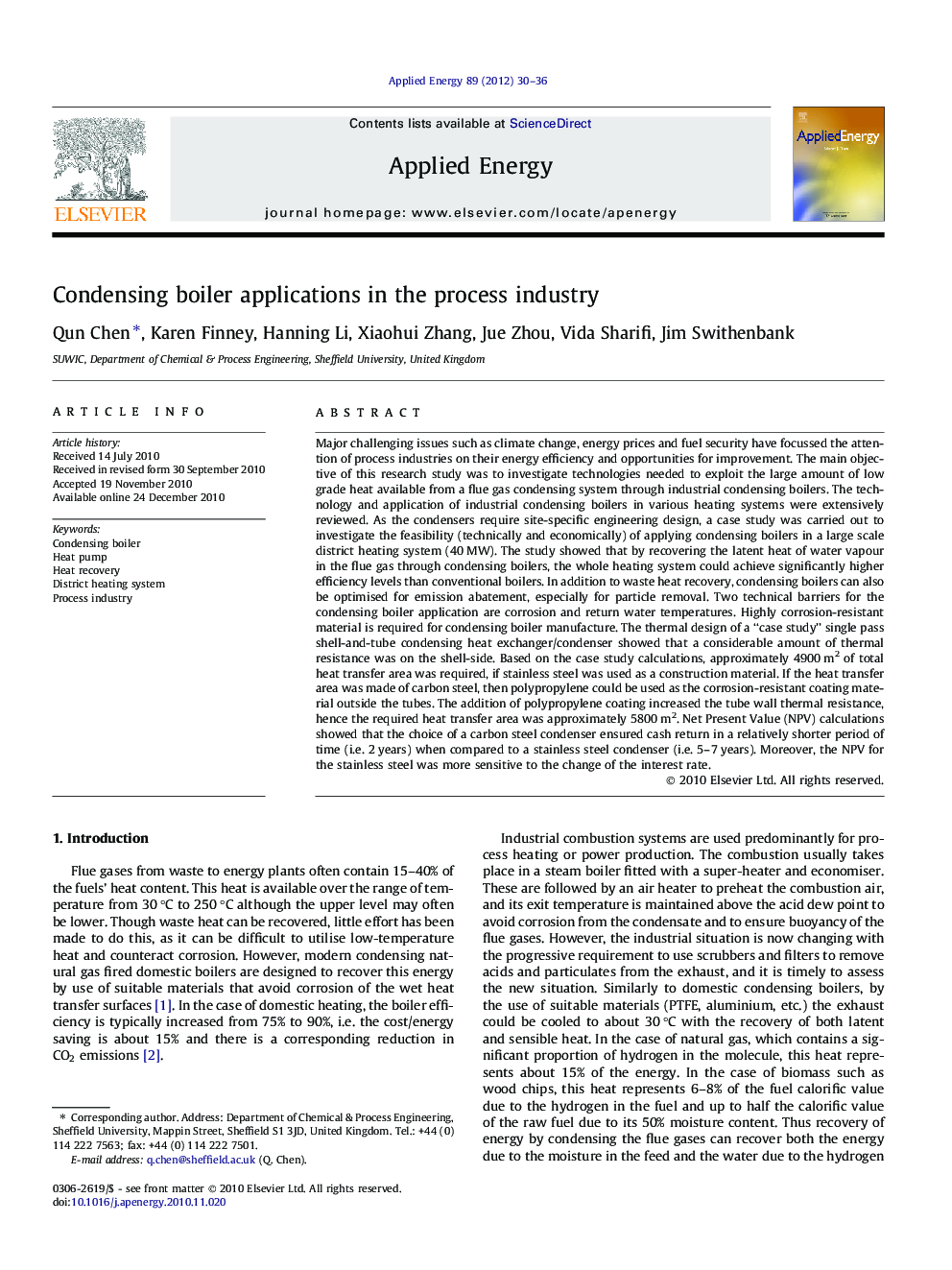| کد مقاله | کد نشریه | سال انتشار | مقاله انگلیسی | نسخه تمام متن |
|---|---|---|---|---|
| 10281883 | 501935 | 2012 | 7 صفحه PDF | دانلود رایگان |
عنوان انگلیسی مقاله ISI
Condensing boiler applications in the process industry
دانلود مقاله + سفارش ترجمه
دانلود مقاله ISI انگلیسی
رایگان برای ایرانیان
کلمات کلیدی
موضوعات مرتبط
مهندسی و علوم پایه
مهندسی انرژی
مهندسی انرژی و فناوری های برق
پیش نمایش صفحه اول مقاله

چکیده انگلیسی
Major challenging issues such as climate change, energy prices and fuel security have focussed the attention of process industries on their energy efficiency and opportunities for improvement. The main objective of this research study was to investigate technologies needed to exploit the large amount of low grade heat available from a flue gas condensing system through industrial condensing boilers. The technology and application of industrial condensing boilers in various heating systems were extensively reviewed. As the condensers require site-specific engineering design, a case study was carried out to investigate the feasibility (technically and economically) of applying condensing boilers in a large scale district heating system (40Â MW). The study showed that by recovering the latent heat of water vapour in the flue gas through condensing boilers, the whole heating system could achieve significantly higher efficiency levels than conventional boilers. In addition to waste heat recovery, condensing boilers can also be optimised for emission abatement, especially for particle removal. Two technical barriers for the condensing boiler application are corrosion and return water temperatures. Highly corrosion-resistant material is required for condensing boiler manufacture. The thermal design of a “case study” single pass shell-and-tube condensing heat exchanger/condenser showed that a considerable amount of thermal resistance was on the shell-side. Based on the case study calculations, approximately 4900Â m2 of total heat transfer area was required, if stainless steel was used as a construction material. If the heat transfer area was made of carbon steel, then polypropylene could be used as the corrosion-resistant coating material outside the tubes. The addition of polypropylene coating increased the tube wall thermal resistance, hence the required heat transfer area was approximately 5800Â m2. Net Present Value (NPV) calculations showed that the choice of a carbon steel condenser ensured cash return in a relatively shorter period of time (i.e. 2Â years) when compared to a stainless steel condenser (i.e. 5-7Â years). Moreover, the NPV for the stainless steel was more sensitive to the change of the interest rate.
ناشر
Database: Elsevier - ScienceDirect (ساینس دایرکت)
Journal: Applied Energy - Volume 89, Issue 1, January 2012, Pages 30-36
Journal: Applied Energy - Volume 89, Issue 1, January 2012, Pages 30-36
نویسندگان
Qun Chen, Karen Finney, Hanning Li, Xiaohui Zhang, Jue Zhou, Vida Sharifi, Jim Swithenbank,